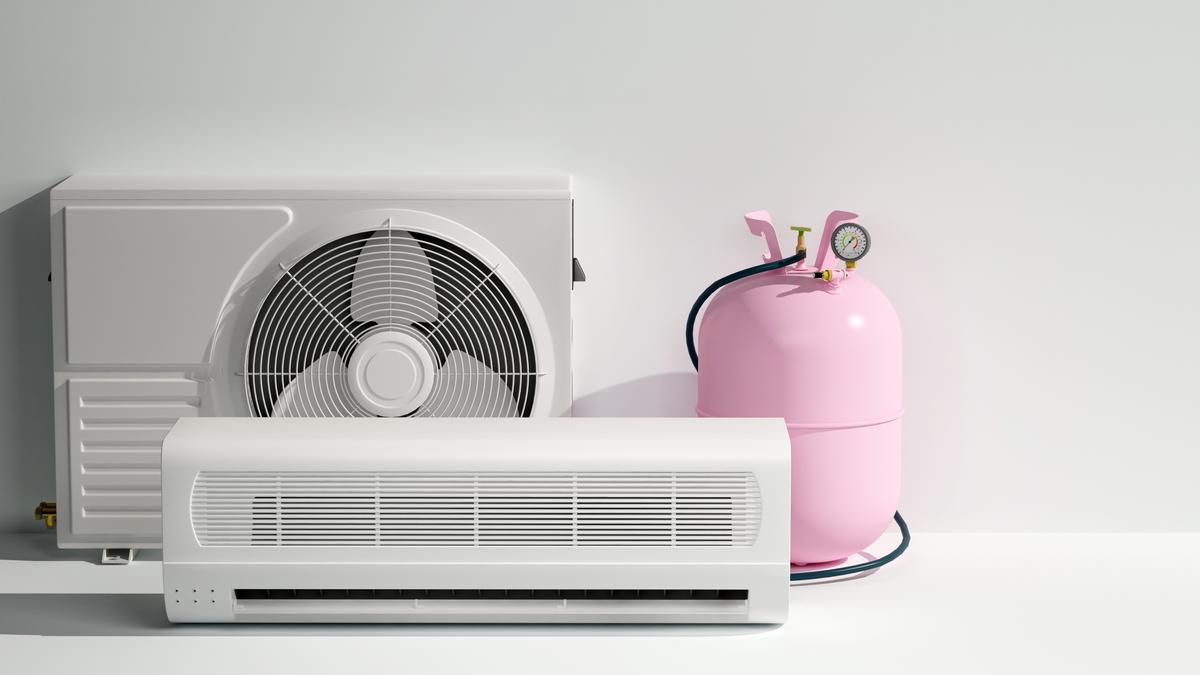R407C refrigerant is a Blend of hydrofluorocarbon (HFC) compounds that are widely used as a substitute for chlorofluorocarbon (CFC) and hydrochlorofluorocarbon (HCFC) refrigerants. It belongs to the HFC family, known for its environmental friendliness and compliance with ozone depletion regulations. R407C is specifically designed to provide efficient cooling while minimizing the impact on the ozone layer.
Composition of R407C
R407C comprises three main components: R32, R125, and R134a. Each of these components plays a crucial role in determining the overall performance of the refrigerant. R32 contributes to the excellent cooling capacity of R407C, while R125 enhances its stability and pressure characteristics. R134a aids in improving the refrigerant’s energy efficiency and lubrication properties. The carefully balanced composition of R407C ensures optimal cooling performance and system reliability.
Working Principle of R407C
The working principle of R407C is based on the vapor compression cycle, which is commonly used in air conditioning and refrigeration systems. The refrigerant absorbs heat from the indoor environment, undergoes a phase change from a liquid to a gas, and releases heat outside. This process repeats to maintain a cool and comfortable indoor temperature. R407C operates efficiently within a specific temperature range, making it suitable for various cooling applications.
Benefits of Using R407C
Using R407C refrigerant offers several benefits in air conditioning systems. Its high cooling capacity ensures quick and effective cooling, even in demanding conditions. Secondly, R407C is compatible with a wide range of air conditioning equipment, making it a versatile choice for different applications. Additionally, its stable properties contribute to system reliability and longevity. Moreover, R407C has low toxicity levels, ensuring a safe working environment for both technicians and occupants.
Applications of R407C in Air Conditioning Systems
R407C finds extensive applications in various air conditioning systems. It is commonly used in residential, commercial, and industrial settings. Whether it’s cooling a small office or a large shopping mall, R407C can meet the cooling demands efficiently. It is suitable for both new installations and retrofits, making it a preferred choice for HVAC professionals. R407C’s versatility and compatibility with different equipment make it a reliable refrigerant in the air conditioning industry.
Safety Considerations for R407C
While R407C is considered a safe refrigerant, it is important to follow proper safety precautions during handling and installation. As with any refrigerant, direct contact with the skin or eyes should be avoided. Technicians working with R407C should wear appropriate personal protective equipment (PPE), including gloves and safety goggles. In case of a leak, proper ventilation and prompt repair are crucial. Adhering to safety guidelines ensures a secure working environment and prevents potential hazards.
How to Handle R407C Safely
To handle R407C safely, it is essential to follow a few key steps. First, ensure that technicians handling the refrigerant are properly trained and certified. They should have a thorough understanding of the safety procedures and guidelines specific to R407C. Secondly, always use the correct equipment and tools designed for R407C handling. This includes recovery and recycling equipment, as well as appropriate containers for storage and transportation. Finally, regular maintenance and inspections of the cooling system help identify and address any potential issues promptly.
Environmental Impact of R407C
R407C refrigerant has a lower environmental impact compared to CFC and HCFC refrigerants. It has zero ozone depletion potential (ODP), meaning it does not contribute to the depletion of the ozone layer. However, it does have a moderate global warming potential (GWP). While R407C is an improvement over older refrigerants, there is ongoing research and development to create even more environmentally friendly alternatives with lower GWP. As regulations evolve, the industry continues to strive for greener and more sustainable refrigeration solutions.
Comparison with Other Refrigerants
When comparing R407C with other refrigerants, several factors come into play. Some Refrigerants may have higher cooling capacities or lower GWP values, while others may offer better energy efficiency. The choice of refrigerant depends on specific requirements, system design, and environmental considerations. HVAC professionals carefully evaluate factors such as performance, safety, availability, and cost to determine the most suitable refrigerant for a given application. R407C remains a popular choice due to its balanced performance and wide application range.
Future Outlook of R407C
As the demand for energy-efficient and environmentally friendly cooling solutions increases, the refrigeration industry continues to evolve. While R407C is widely used today, ongoing research and development are focused on creating even more sustainable alternatives. The future outlook involves the exploration of refrigerants with even lower GWP and improved energy efficiency. These advancements aim to strike a balance between effective cooling and reduced environmental impact. The continuous progress in refrigeration technology promises a greener and more sustainable future for cooling systems.

